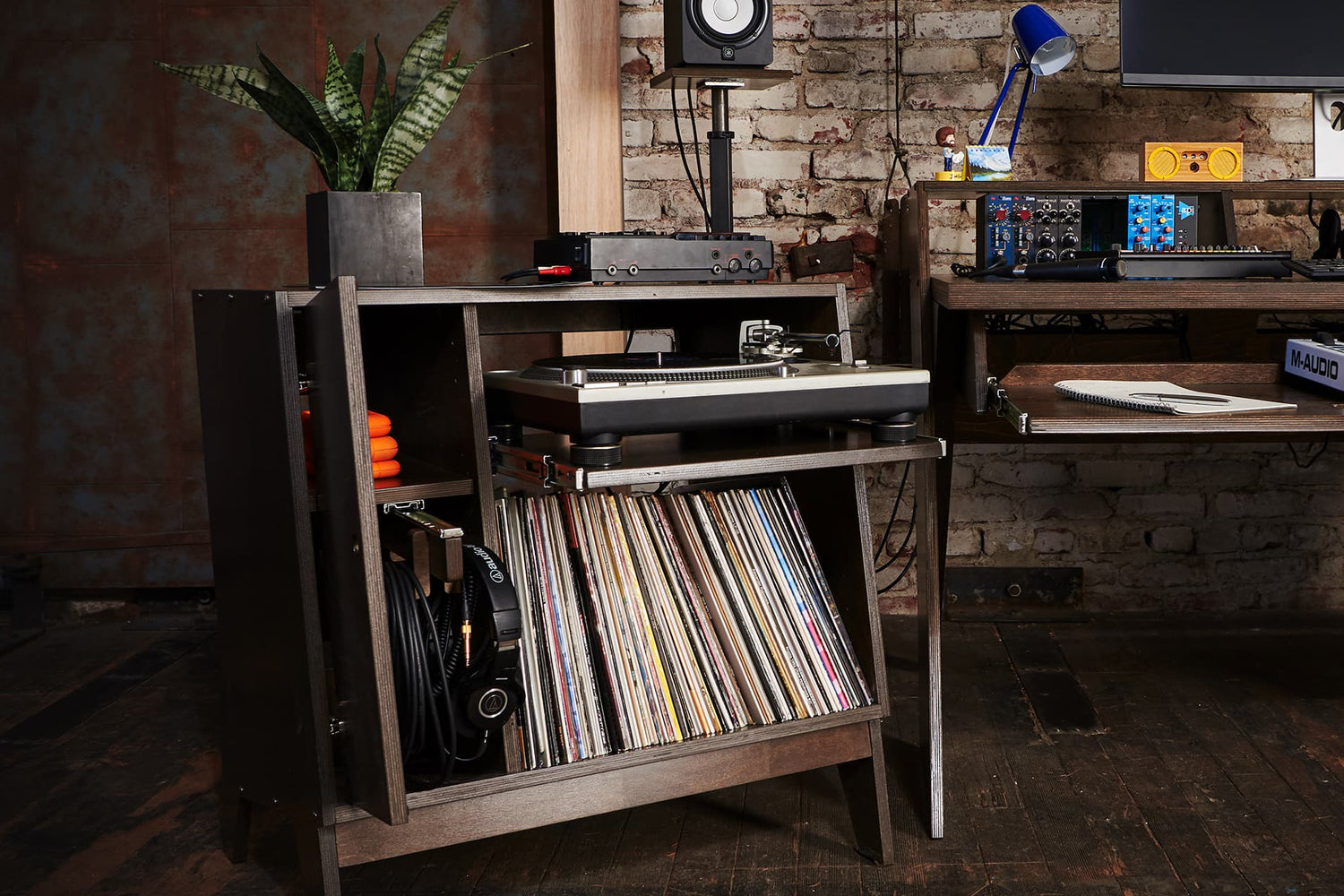Sidecar may seem like a simple piece of studio furniture, but as anyone who owns one, or has seen the hole diagram which allows for its flexibility can attest, it’s anything but simple.
When we were ideating Sidecar, we recognized that while many of us aspire to have a rack full of gear because we’re addicted to this stuff, a lot of us in the box producers don’t have or need that much rack mounted processing, and would like a piece of furniture that we could grow with, or even be useful if we do not ever get that 12U’s of gear. Through surveying a few hundred Platform Studio Desk users, we realized that what people actually needed was a multipurpose piece of studio furniture that could house rack gear, drum machines, tabletop synths, 500 series modules, and turntables, to name a few, while providing a place to put loose gear like headphones, mics and cables when not in use. We needed to design it well enough that it wouldn’t be a master of none, as in, could sort of do everything, but not do anything well. It needed to be good enough that it felt like it was designed for every user's specific workflow. It also had to look good, since redefining the studio aesthetic is our modus operandi.
We first tackled ergonomics. That meant that if we added a side compartment, it needed to be reversible depending on which side of the desk it would live on. Therefore, we needed to figure out a way for the door to be able to flip to the proper side, and any kind of pullout within the compartment would need to clear the hinges and door regardless of side. This wasn’t an easy task, but we were able to pull it off. We also felt that anything racked needed to be angled just like any high end rack so you can easily reach knobs and see settings. This presented a challenge because any kind of shelf and pullout tray obviously can’t be angled, and we would need to compensate for any kind of material thickness of the shelf to not interfere with the rack ears. To support this, we decided on 3U rack increments because a shelf below an angled piece of rack equipment would still have plenty of clearance.
Another good reason for 3U increments is it allows enough room for most turntables, allowing 9U’s below, or if a user didn’t want to rack anything and just have a turntable setup, an overall 12U height allows for a turntable on the sliding shelf with LP’s below, where we included a lip in the back so vinyl won’t slide out of the back. This represents just one use case out of dozens we designed for.
In addition we wanted to give users more than just a side compartment to throw stuff into, we wanted to give users something to actually hang their cables and headphones on to be easily accessible and tidy to just be grabbed in the middle of a session. Fortunately, one of our designers is really into Sashimono, which is the Japanese art of wood joinery, and while we don’t do true Sashimono because we do use a screw to hold the cable hanger assembly together, the design is ingenious in its simplicity and usefulness.

The last ergonomic piece of the puzzle was making it work with Platform. The main challenge we wanted to address was making sure that Platform’s keyboard tray and Sidecar’s pullout trays would not interfere with each other when both pulled out. Therefore we made it so most of Sidecar’s available pull out tray heights will not interfere with Platform’s.
Once we set our ergonomic expectations, we had to tackle how to implement all of this, and it turns out with a lot of holes. Those holes also have to correspond with holes on the other side, compensate for angles, as well as compensate for a divider piece that’s a bit shorter than the sides to accommodate a closing door, while all being reversible. The constellation of holes that we came up with allows for all of this, and fortunately with modern CNC technology we’re able to do this over and over again.

We of course did not forget cable management, we like edible spaghetti, we don’t like cable spaghetti. There are holes in the top and bottom as well as behind the side compartment to allow you to fish your cables where they need to go, with holes large enough to accommodate all regular plug types. Our goal was, if you so choose, to be able to corral all cables within Sidecar so only a single snake and power cable would need to go out of the bottom.
We’re proud of what we accomplished with Sidecar, it’s a beautiful piece of furniture that will enhance the look of any studio, while being flexible enough to also improve the workflow of nearly every use case you can throw at it.



